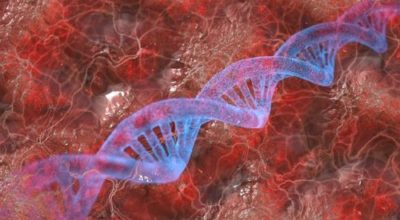 PURPLE WITH A PURPOSE
PURPLE WITH A PURPOSE
Hello everyone and welcome back to the Blog. Believe it or not, it’s November already and the holidays are nearly upon us. In addition to ushering in the winter holiday season, November also is Gratitude Month and Pancreatic Cancer Awareness Month.
As we’ll be discussing gratitude next week, this Blog is devoted to pancreatic cancer, what it is, what the risks are, and how we can protect ourselves.
First, pancreatic cancer is what I call a “silent cancer.” This means that it often remains asymptomatic and undiagnosed until it is more advanced. And, when a cancer is diagnosed later in its development, the chances of treating it successfully decrease.
So, let’s begin by arming ourselves with a few facts. Pancreatic cancer is the tenth most common cancer in the world. It affects both sexes, but is more often found in men than women. And in the United States alone, this means that over 60,000 people every year face a diagnosis of pancreatic cancer.
Although it’s difficult to say with certainty what actually causes pancreatic cancer, there are a few factors that are linked to its development. These include tobacco use, obesity, certain occupations and one’s medical family history.
In addition, if Lynch, von Hippel-Lindau or Peutz-Jeghers syndrome, cirrhosis of the liver, diabetes mellitus or hereditary breast and ovarian cancer syndrome run in our family, we have a greater risk for developing pancreatic cancer.
Understanding our risks is the first step to protecting ourselves, but if we ever are diagnosed with pancreatic cancer, what is science doing to help treat this cancer more effectively?
Fortunately, there are several new developments that are proving helpful in treating pancreatic cancer even when the disease is discovered late in its development, and here are a few.
GENE THERAPY
This therapy delivers specific genes to cancer cells, which are often carried by specially designed viruses. Now, the genes that are delivered to the cancer cells are normal genes, without mutations. Once these normal genes are inside a cancer cell, they replace the abnormal genes that contribute to cancer growth.
Genetic and molecular research related to gene therapy is based on identifying damaged genes and proteins. Once pancreatic tumor samples are identified through DNA sequencing and mutational analysis, they can be repaired. This analysis can even be performed on blood samples. Once the information is gathered, new drugs can be developed that target pancreatic cancer cells and reduce their growth.
 IMMUNOTHERAPY
IMMUNOTHERAPY
A number of clinical trials that use vaccines to treat different cancers now include pancreatic cancer. The vaccine itself is often made from pancreatic cancer cells, bacteria or a patient’s specific tumor cells. Such vaccines can be administered after, during or even instead of chemotherapy.
CHEMOTHERAPY
Here again, with all the new information research is uncovering, more effective chemotherapy drugs are being developed. For instance, the new drug nanoliposomal irinotecan has now been approved for the treatment of advanced pancreatic cancer.
TARGETED THERAPY
This approach involves the use of drugs designed to attack cancer tumors directly. With pancreatic cancer, the drug erlotinib may be combined with gemcitabine to fight the cancer cells. Researchers also are working with drugs that target a gene called Ras. This gene is often mutated in pancreatic cancer and if we can treat this mutation, we can more effectively treat the cancer itself.
STEM CELLS
Stem cells found in pancreatic cancer tumors are particularly resistant to traditional therapies. New research is focused on treatments that directly target those cancer stem cells to fight pancreatic cancer and inhibit its growth.
CBD
This is a naturally occurring, non-psychoactive element of cannabis. Its use in conjunction with traditional chemotherapy has been found to reduce inflammation and combat tumor and cancer cells.
Moreover, researchers are finding ways to detect cancer of the pancreas earlier when it can be more effectively treated. Special blood tests and new diagnostic imaging tools can help us find mutated tissue at its “precancerous” stage, known as pancreatic intraepithelial neoplasia or PanIN lesions. These screening procedures are proving quite effective for individuals with a strong family history of the genetic conditions linked to pancreatic cancer.
While we can’t prevent any cancer completely, with pancreatic cancer we are making progress. We are increasing the chances of survival for every individual affected by the disease. So, please remember there is always hope.
 Once again, thanks for joining me everyone. Enjoy this beautiful month of November and the holidays that beckon. Always remain proactive and prepared when it comes to healthcare and be thankful for all the healthy and loving people in your life.
Once again, thanks for joining me everyone. Enjoy this beautiful month of November and the holidays that beckon. Always remain proactive and prepared when it comes to healthcare and be thankful for all the healthy and loving people in your life.
Until next time, stay safe, stay in GOOD HEALTH and . . .
TAKE THE COURSE AND TAKE CHARGE!



Leave a Comment